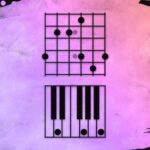Build Your Skills
Learn music theory Train your ears Track your tempoRead Now
Get the Newsletter
Categories
- | BeatMirror (10)
- | HearEQ (11)
- | Waay (23)
- | WaayFinder (1)
- Audio (16)
- For musicians (34)
- Guitar (2)
- Music theory (15)
- News (43)
- Startup stories (2)
- Tutorial (4)
Keep in Touch
About Ten Kettles
We love music, we love learning, and we love building brand new things. We are Ten Kettles.
Read more >-
September 2, 2015
Chord progressions, modes, and The Axis of Awesome
There’s a great video of an Australian group called “The Axis of Awesome” who demonstrate the sheer number of songs that have the exact same chord progression. My friend Lisa sent it to me the other day, and here it is:
It’s a well done performance, and I don’t think it’s a slight towards any of those songs either—hey, if it’s a good chord progression, use it! But sometimes as songwriters we can find ourselves rehashing the same old progressions in our own music, and the moment we start thinking “Hey, I’m getting bored of this” then it might be time to mix it up.
One way to mix it up is to contrast a “classic” chord progression with something very different elsewhere in the song. So, let’s say you use that progression from the video as your verse. For the chorus, you could switch up the key entirely, and using a tool called modes will help make sure it sounds good.
What is a key?
You can think of a mode as a type of key. If you’re not familiar with keys, they are a collection of (usually seven) notes that sound good together, and they tend to emphasize one particular note. For example, a song in the key of C will have the notes C D E F G A B and it’ll tend to focus on C. That means it’ll usually start on a C major chord, end on a C major chord, and if you look at the notes in all the other instruments—the bass, the guitar, the keys, the vocalist—that C is going to be coming up a lot. Here’s a verse part in the key of C that uses the chord progression* from the video: C G Am F.
What is a mode?
But, what if we want to use those exact same 7 notes, but change the “focus note” from C to something else? Say, F? Well, that means we’d probably start the progression with an F major chord and use these notes: F G A B C D E. (You can see these are the same notes as the key of C major, just a different order.) The notes would sound great together, but it would have a different feel from the key of C… a different character. Let’s take a listen to a part that uses those same seven notes and starts on an F major chord. Here’s the chord progression: F G Am G.
We’d say this part is in the mode of “F Lydian.” We could have chosen any of the other notes to focus on instead of F, and it would have sounded totally different. If we’d picked D, we’d have the mode of “D Dorian,” a focus on G would give us “G Mixolydian” and so on. Lots of options (and fancy names), each with their own sound and feel. But here’s the best part: because both chord progressions use the same notes, they can fit really nicely together in the same song. Here’s what they sound like back-to-back:
More music theory?
Like it? Well that’s the cool thing about using applied music theory, you can use it to explore new ideas, break songwriting habits that are getting old, and get to that sound you like a whole lot faster. Music theory can get a bad rap when it’s taught just so students can pass a music theory exam… and I think I like the idea of learning theory to write songs a little better. If you think so too, you might want to check out “Waay: Music theory that matters” for iPad (and soon for iPhone too). Here’s a clip of it in action:
Interested? Start learning here.
*The video’s progression is in the key of E. If you want to play along, the chords are E B C#m A.



ten kettles is rocking it as much as the axis of awesome.
two incredibly high quality apps that help people become more musical!
Thanks for the kind words, John!